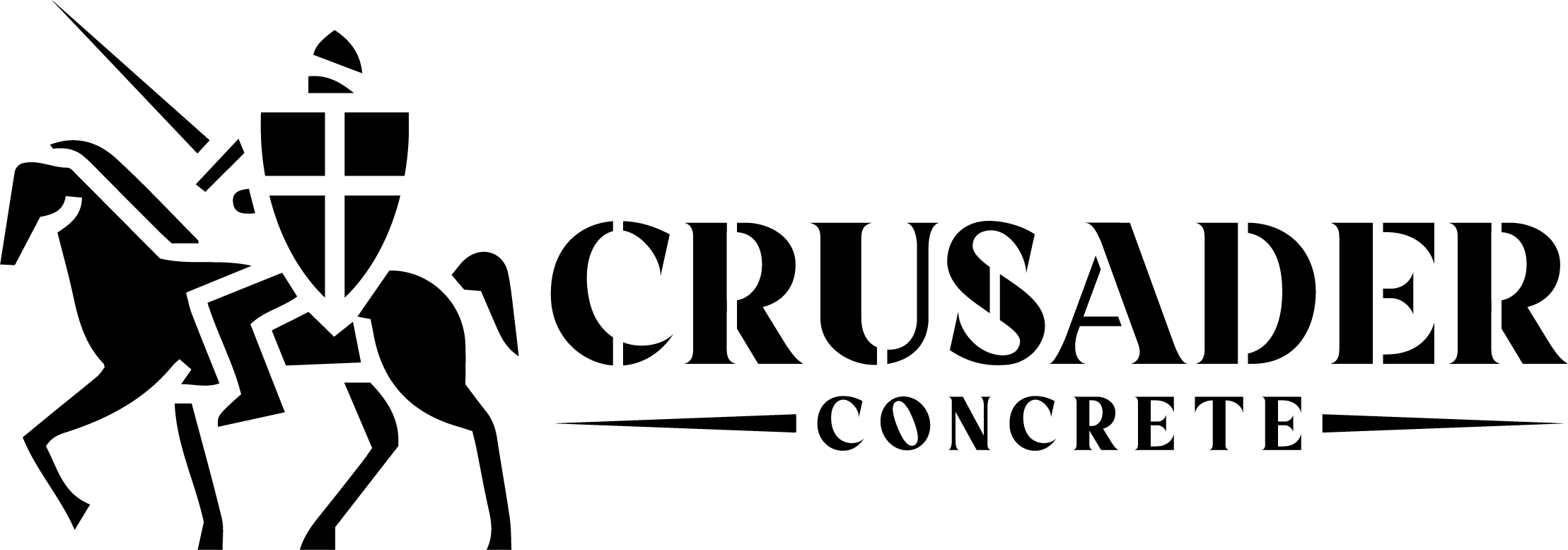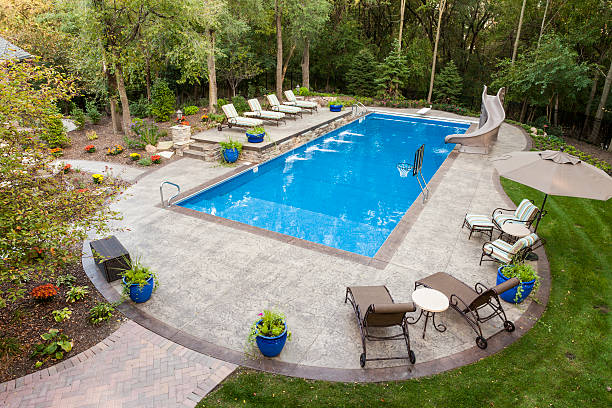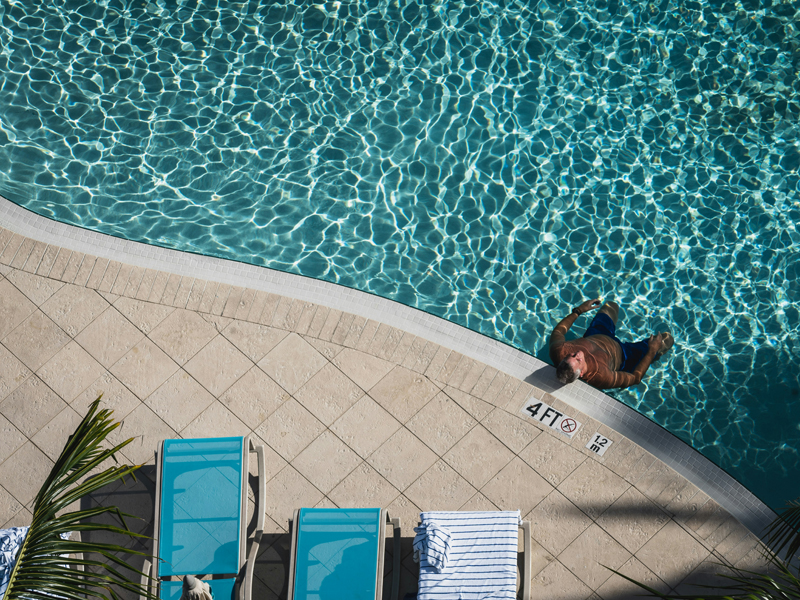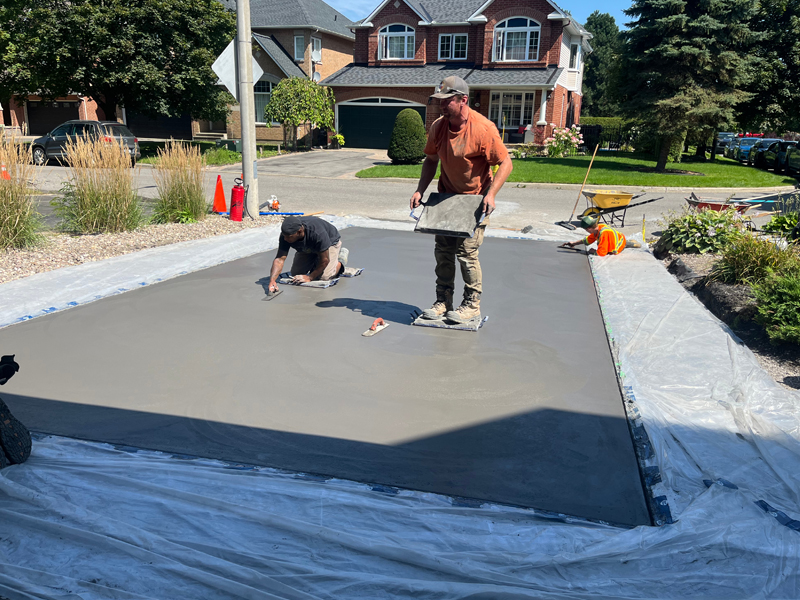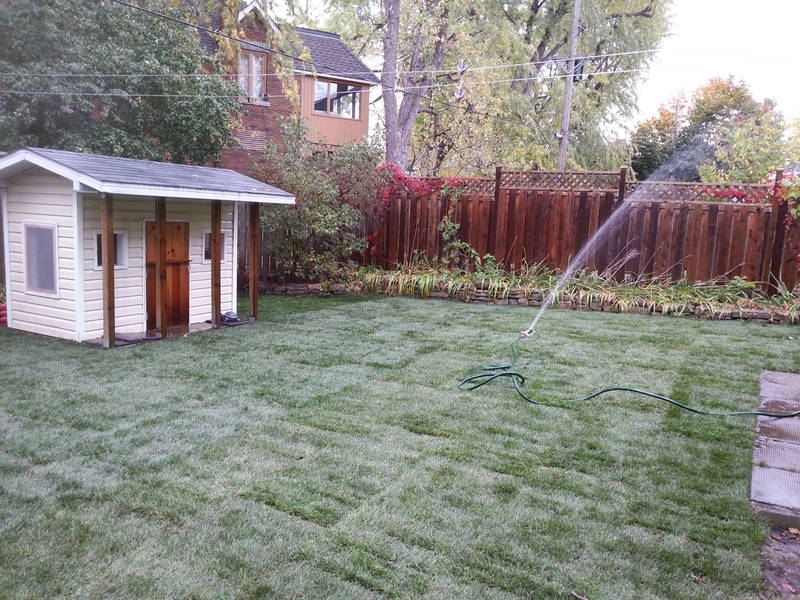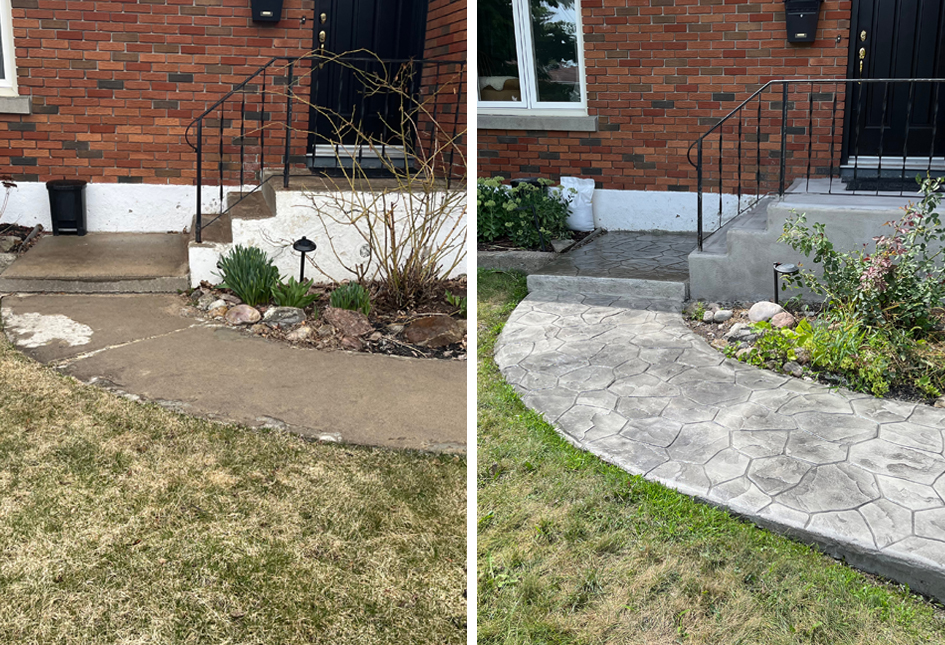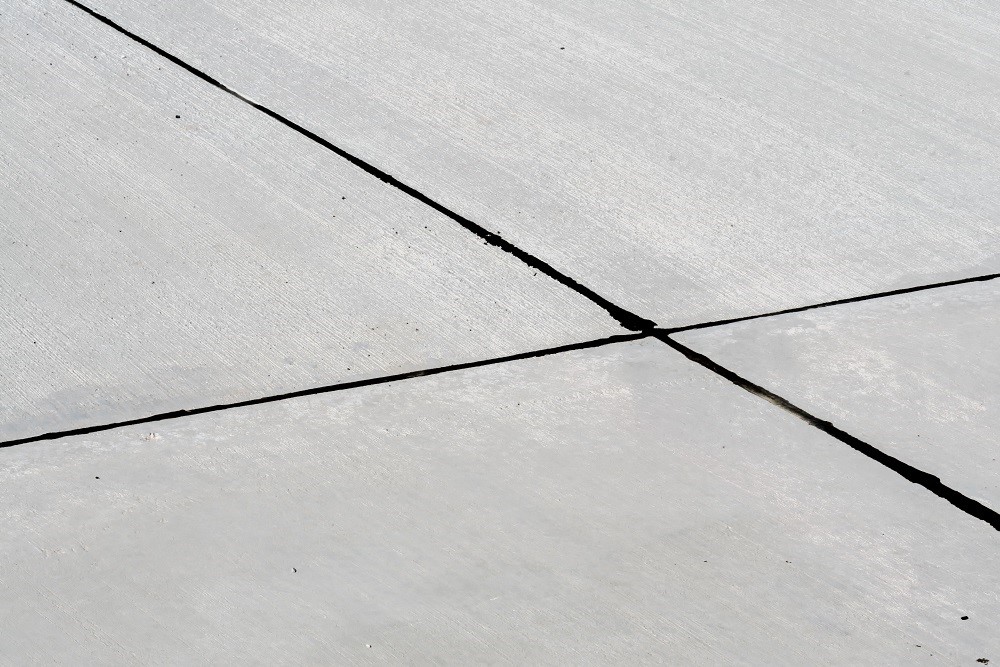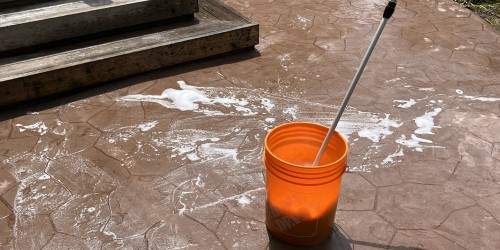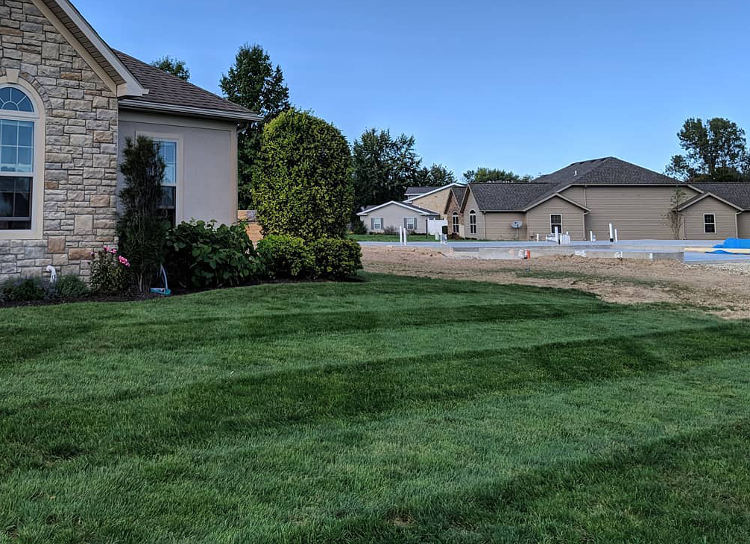Choosing the right pool decking material involves considering durability, maintenance, safety, heat retention, and design. Below, we compare four popular options: Concrete, Interlock (Pavers), Wood, and Composite Decking across key factors.
1. Concrete Pool Decking
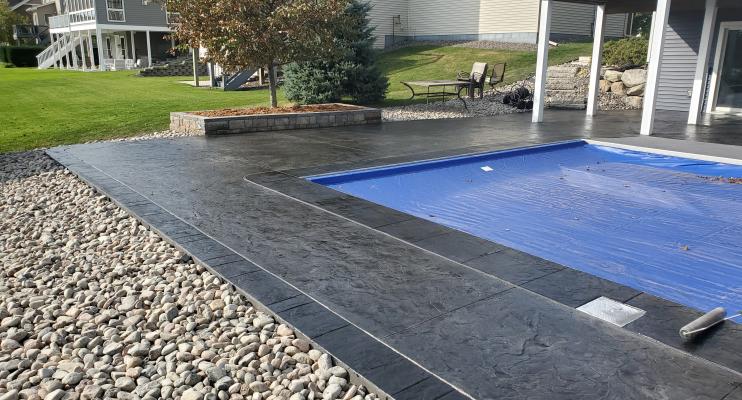
Photo: Unlimited Concrete
Ease of Maintenance:
Concrete is relatively low-maintenance but requires periodic cleaning, sealing (every 2–3 years), and crack repair. Proper maintenance ensures durability for decades.
Slip Resistance:
Concrete can be slippery when wet but can be made safer with broom finishes, exposed aggregate, non-slip coatings, or stamped textures.
Heat Reflectivity:
Concrete can get hot, especially in dark colors or smooth finishes. Lighter colors and reflective coatings help keep it cooler.
Design Options:
Concrete offers versatile design choices, including broomed, stamped, stained, or exposed aggregate finishes. Various colors and patterns can mimic stone, wood, or tile.
2. Interlock (Paver) Pool Decking
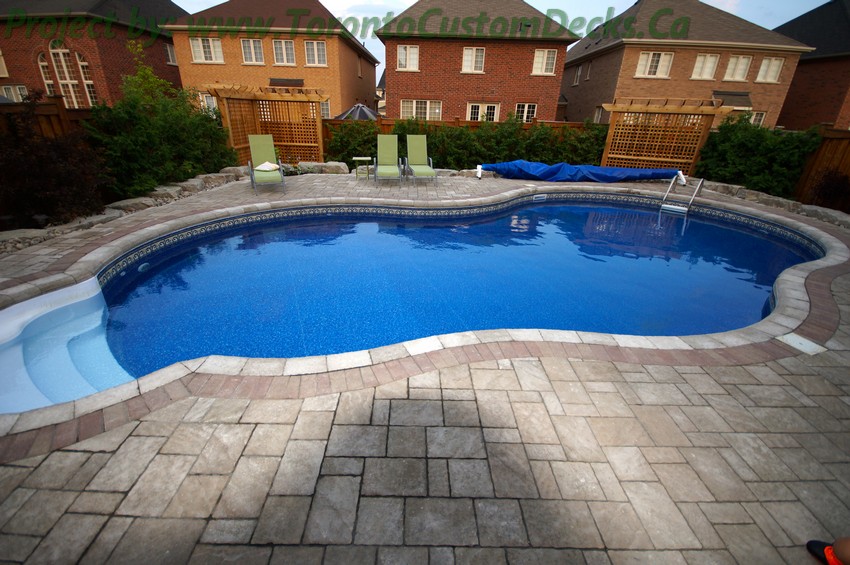
Photo: M.E. Contracting
Ease of Maintenance:
Requires regular sweeping and pressure washing to prevent weed and moss buildup. Polymeric sand should be reapplied every few years to maintain joint stability.
Slip Resistance:
Naturally more slip-resistant than smooth concrete due to textured surfaces and water drainage between pavers.
Heat Reflectivity:
Depends on the material and color. Travertine and light-colored pavers stay cooler, while dark concrete and brick pavers retain more heat.
Design Options:
Interlock decking provides varied material choices, including concrete, natural stone, brick, and porcelain. Patterns like herringbone, basketweave, and ashlar add design flexibility.
3. Wood Pool Decking
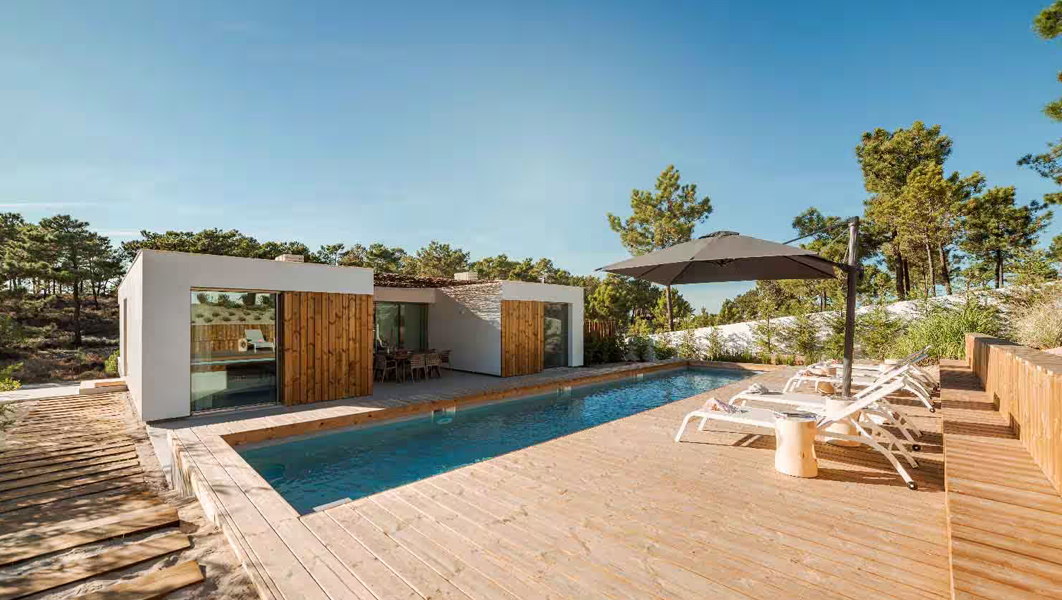
Photo: Luis Viegas / Adobe Stock
Ease of Maintenance:
Requires regular cleaning, sealing (every 1–3 years), and repairs to prevent rot, warping, and insect damage.
Slip Resistance:
Wood is naturally slippery when wet, but non-slip coatings, grooved boards, and proper drainage improve traction.
Heat Reflectivity:
Softwoods (cedar, redwood) stay cooler than dense hardwoods. Darker stains absorb more heat, while lighter finishes reflect it.
Design Options:
Wood offers classic and modern looks with layout choices like straight planks, chevron, or herringbone patterns. Available in stained, painted, or natural finishes.
4. Composite Wood Pool Decking
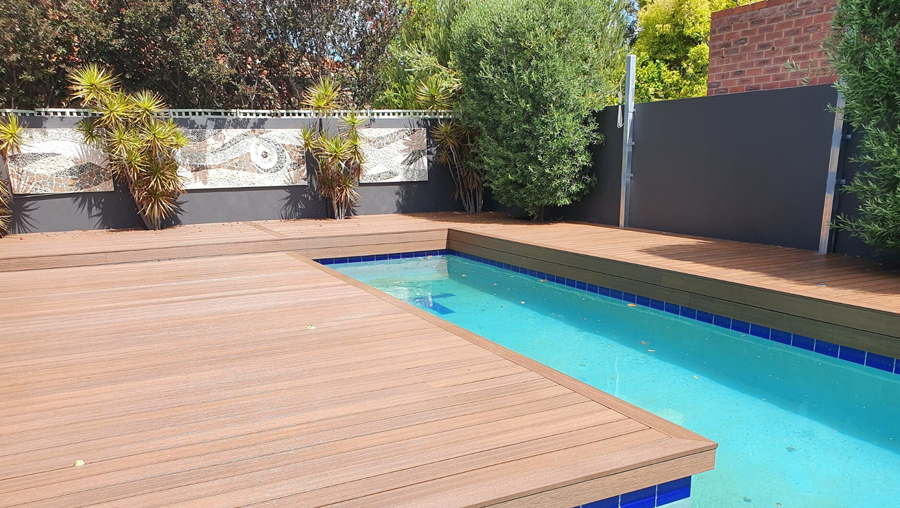
Photo: Final Touch Carpentry & Construction
Ease of Maintenance:
Easiest to maintain—no sealing, staining, or painting required. Only occasional cleaning with soap and water is needed.
Slip Resistance:
More slip-resistant than natural wood, especially with textured or grooved boards. However, glossy finishes can reduce grip.
Heat Reflectivity:
Can become hotter than wood, particularly in dark colors. Some brands offer heat-resistant technology to reduce surface temperatures.
Design Options:
Composites provide various colors and textures, mimicking natural wood with options like multi-toned planks, herringbone layouts, and picture-frame borders.
Final Comparison:
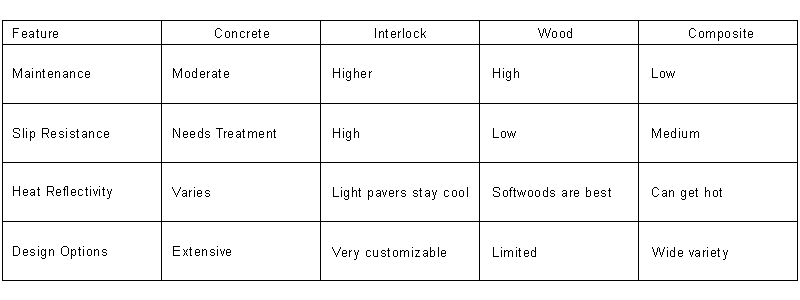
Conclusion:
- Concrete is durable and customizable, with moderate maintenance.
- Interlock pavers offer versatility and high slip resistance, but require more upkeep.
- Wood has a classic appeal but needs frequent maintenance.
- Composite decking is low-maintenance and modern, though heat retention can be an issue.
